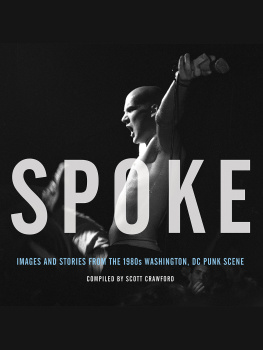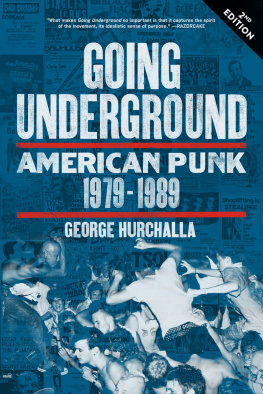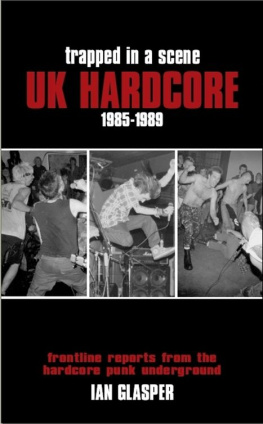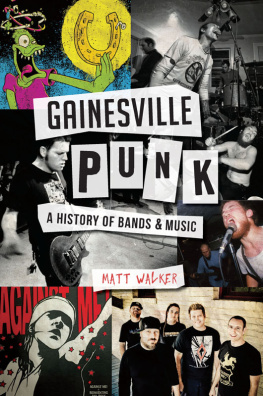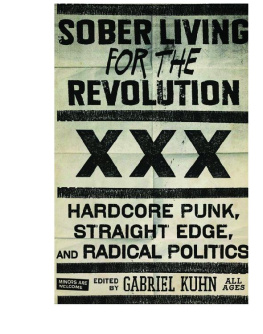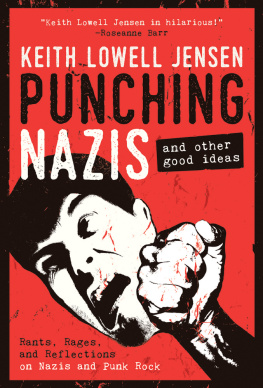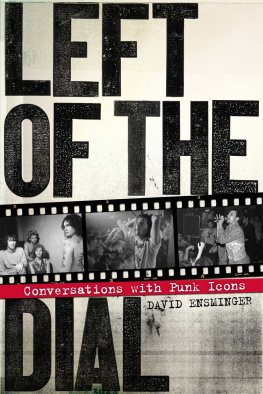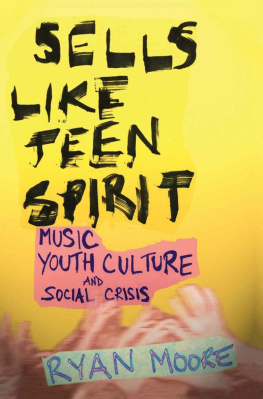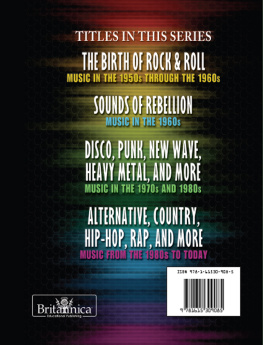

9th and F Streets, Washington, DC, 1981 (Ellie Moran)
There was nothing extraordinary about growing up just outside of Washington, DC, in the 1980s. But head south a few miles down Georgia Avenue into the heart of the city and you were at the epicenter of one of the countrys most vibrant punk scenesthe birthplace of bands like Minor Threat, Bad Brains, Government Issue, Scream, and others. When I discovered at the age of twelve that these bands were playing in my backyard, my world changed. I was a skinny, nonathletic kid who wasnt particularly good at anything. So, much like I had with comic books and B movies before, I hunted down everything I could find on the subjectwhich at that point consisted of fanzines and a few record-store clerks who would answer my endless barrage of questions. It was that geeky preoccupation that led me to start a photocopied fanzine called Metrozine in 1984. Published from my mothers kitchen table, it exposed me to a community that encouraged innovation, insurrection, and a DIY approach to life. At that point, anything (and everything) seemed possible.
This was always a story that I wanted to tell, and yet when I reflected on it, so much of it seemed like a Technicolor dream filled with cigarette smoke, feedback, sweat, and my own adolescent angst. It wasnt until I approached middle age that I was able to start to wrap my head around how deeply the scene impacted me and informed so many of the decisions that Id made in my life. Thats what led me to start filming Salad Daysa documentary told ostensibly through my eyes, but ultimately through the voices that were there and/or inspired by the DC punk scene throughout the 1980s. Shortly after hatching the idea, I reached out to my longtime photographer friend Jim Saah (whose iconic photos of that period appear in the film and in this book)like me, he was inspired by the music and the aesthetic of the DC community, and we began work on Salad Days shortly thereafter.
As you can imagine, trying to cover every band and every personality was nearly impossible within the confines of a hundred-minute documentary film. With that in mind, I reached out to Akashic Books with the goal of exploring many of the bands featured in the film in a little more detail and in their own words. Over the course of almost four years, we interviewed over a hundred people for Salad Daysand from those I culled many of the quotes that you see here. There were a few band members who chose to not be includedsome thought they had little to add, while others had mixed feelings about their own experiences.
One thing I was constantly reminded of while making the movie was just how young we were. Its important to acknowledge that much of what we experienced was filtered through an adolescent lensfilled with self-doubt and a still-developing worldviewa fact particularly noteworthy given how self-assured and technically proficient much of the music was. It also helps explain some of the misconceptions (and misperceptions) of the era.
Much like the film, this book seeks to take a chronological look at the musicians who helped shape the DC scene throughout the decade. While Spoke covers many of the bands in the film, it certainly doesnt include all of the musicians, artists, photographers, writers, and entrepreneurs who made the community come alive. I encourage you to seek out more information from sources like the DC Punk Archive (dclibrary.org/punk), the DC Punk and Indie Fanzine Collection (http://hdl.handle.net/1903.1/26175), and books like Banned in DC, Dance of Days, and Hard Art, for additional insights into what made the city so special.
Although both the movie and this book examine the past, neither is meant to serve as some kind of misty-eyed scrapbook. In the words of author/activist Mark Andersen, Our salad days werent then, theyre now. Theyre always now. Scott Crawford

Scott crawfoRd, DC Space, DC, 1985 (JenN izza Fox-thomas)

Bad Brains, Hard Art, DC, 1979 (Lucian Perkins)
I always thought if Im going to be a singer, I gotta do it like HR. HENRY ROLLINS
For all intents and purposes , Bad Brains is where the story of DC punk begins. Yes, White Boy, The Slickee Boys, The Nurses, and others came first. But the direct inspiration for local youths like Ian MacKaye and Henry Rollins to transform themselvesand their musiccame from stumbling across the lightning-fast proto-thrash and intense commitment of Bad Brains in full flight at Madams Organ (a DC venue), and the demo that would later be released as the Black Dots LP.
Originally a jazz fusion/funk ensemble called Mind Power made up of Paul HR Hudson on vocals, Gary Dr. Know Miller on guitar, Darryl Jenifer on bass, and Pauls younger brother Earl on drums, they would be inspired by friend Sid McCrays introduction of the Sex Pistols, Dead Boys, and Ramones. And by their parents ownership of books by Napoleon Hill, with the concept of PMA (positive mental attitude). Renaming themselves Bad Brains after a track on the fourth Ramones album, they shaped their music into a precise and complex punk, suffering no loss of ferocity. A Bob Marley concert would influence them to embrace Rastafari, able to shift from land-speed-record-breaking thrash in one song to heavy, creepy-crawl dub reggae in the next.
Bad Brains would relocate to New York City in the early 1980s after being banned in DC (as one of their most famous songs put it), recording a highly influential debut LP that was initially released only on cassette by Reachout International Records (ROIR) in January 1982. The group pursued various exciting new musical directions over the years, dissolving and reforming many times. But it was with their first single, Pay to Cum (1980)which hit many ears like a Sex Pistols record played at 78 rpm, and made many people check to see if their turntables were set at the proper speedthat harDCore was truly born. The first Ramones LP was fast, but Bad Brains debut single was fasterand impossibly tight. Tim Stegall

9:30 CLUB, DC, 1982 (MALCOLM RIVIERA)
HENRY ROLLINS: I remember working in Georgetown and seeing this intense, scary-looking punk dude, who happened to be black, putting up fliers. When I walked up to the pole it was on, I saw that it was for the Bad Brains opening for The Damned. A few hours later, I saw them onstage for the first time. They were lean, good-looking, they had ripped clothes with red paint for blood. A lot of people were backing away from the stage when they first started. Myself, Ian [MacKaye], Mark Sullivan, and a few others all went toward the stage. We were just like, Wow! I remember them singing Whyd You Have to Go? and watching HR just screaming and freaking out onstage. He was the most charismatic guy Id ever seen next to Lux Interior at that point. When they all walked offstage, we all looked at each other and said, Thats the best band in the world.
BARBARA ANN RICE: Before they were the Bad Brains [Mind Power], we gave a ride to HR and some friends from DC Space. In the backseat, they started singing the Ramones Bad Brain song.
Next page
